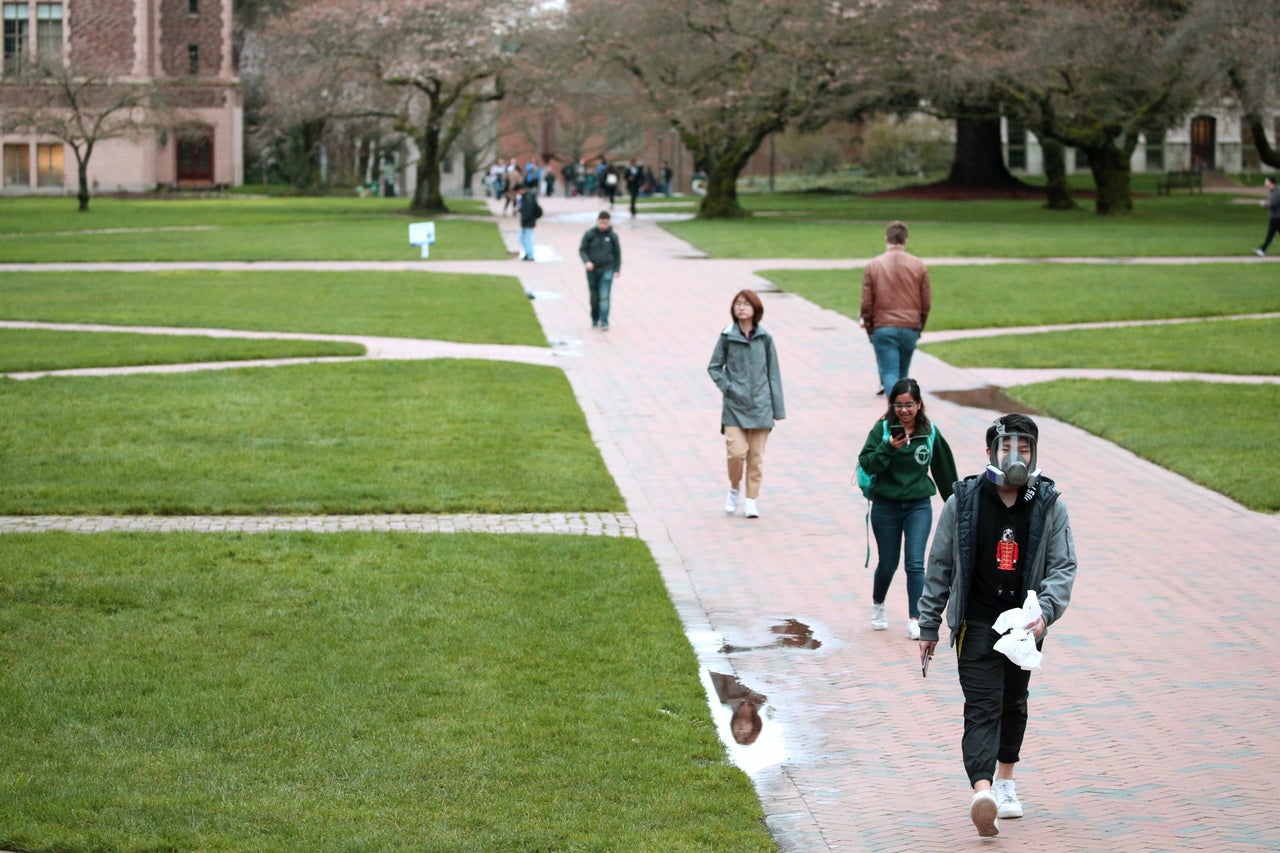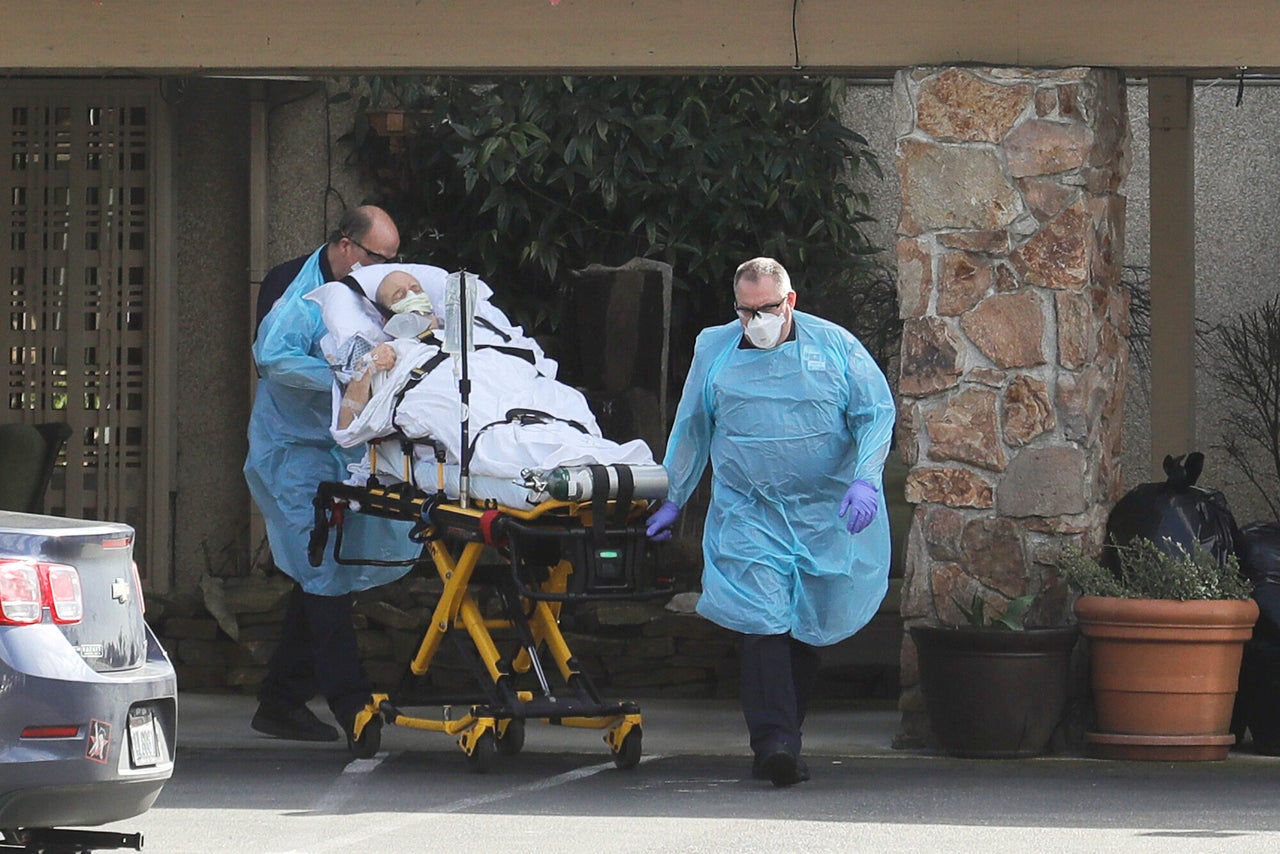SEATTLE — Nearly six weeks after the Centers for Disease Control and Prevention confirmed the first coronavirus case here, people living in the U.S. epicenter of the epidemic are still waiting for clear information about how to get tested for COVID-19, the disease caused by the coronavirus, and what it will cost.
Last week, things seemed to be moving forward. Gov. Jay Inslee (D) announced that the state would cover testing costs for uninsured patients. The state’s insurance commissioner, Mike Kreidler, said he had ordered insurance companies to waive all copays and deductibles.
But political orders rarely match the realities of the American healthcare system. Starting on Wednesday, first posing the inquiry as a potential patient and then as a journalist, I spent two days trying to get a clear answer to a simple, essential, possibly lifesaving question: What does it cost to get a COVID-19 test?
First stop: the University of Washington Medical Center. Last week, the hospital announced that it had established a drive-through COVID-19 testing center. I arrived at the main entrance and told the Walmart-style greeter that I had coronavirus symptoms and wanted to get tested. She directed me to the hospital’s emergency department, where I told the front desk staffer the same thing: coughing, fever, shortness of breath.
(I should mention here that all of the emergency rooms I visited were eerily empty and that I never waited in line to speak with staff or received any services. None of my conversations with health care workers for this article exceeded a few minutes. I’m not a monster, the last thing I want to do is make it even harder for real COVID-19 patients to get care.)
As the receptionist handed me an N95 mask, I asked how much getting the test would cost me. If I had insurance, he replied, probably somewhere between $100 and $500. If I didn’t, it would be roughly $1,600.
“I thought the governor had given assurances that the test would be free,” I said.
“Yeah, I’ve been hearing some crazy stuff,” he replied.
Later, when I called the UW Medical Center’s press team and told them about this interaction, they said the receptionist was “misinformed” and apologized for the error. Instead of asking someone at the hospital, I should have called the billing department.
This is common in the American health care system ― doctors, nurses and hospital staff often don’t have answers to what medical care will cost. That’s a major impediment to people getting care in all situations, and a serious problem during the coronavirus outbreak, when it’s vital for people to access tests and treatment to avoid spreading the virus further.
And while I don’t have symptoms of COVID-19 (*makes sign of the cross three times*), thousands of people in this city do. Many of them do not have $1,600 lying around. Some do not have $100. But all of them need clear information from politicians and public health workers and, yes, even people who work in hospitals, about the cost implications of getting tested. America’s pandemic response relies on getting this right.
After my visit to the University of Washington Medical Center, I tried other emergency rooms. I showed up at Swedish and Harborview, two of the city’s largest hospitals, with the same story: I was having symptoms and needed a test. Staffers assured me that I would pay something but that no one at the ER, in the building or on the phone would know how much.
Two more free masks later, I decided to try my luck with phone calls.
“There are currently no medications to treat COVID-19, so whether you test positive or negative, your health care provider’s recommendations will be the same.”
- Washington State Health Department's COVID-19 hotline
Swedish Hospital’s billing department transferred me to the “patient financial advocate,” who informed me that the test was available only through the emergency room and that getting it would cost me roughly $8,000 — with a 30% discount and financial assistance if I was uninsured.
When I asked why the cost was so high, the operator replied that the doctors would want to perform a battery of other tests (draw blood, get X-rays, etc.) alongside the COVID-19 test. She also told me that I could pop down to the UW Medical Center and get a free drive-through test, which is not true.
Then I called UW Medical Center’s billing department. The operator told me that the COVID-19 test had not been assigned a “CPT code,” so she couldn’t tell me the price. I gave the (extremely personable!) operator my number, and she said she would call me back.
While I waited, I kept calling around. An operator at Providence, the largest hospital in Snohomish County, where some of the first COVID-19 cases in the Seattle area had been discovered, told me to contact my primary care doctor. Another operator in the emergency department told me she had no idea about costs whatsoever.
At Virginia Mason, another major Seattle hospital, the operator directed me to a “financial navigator,” who told me that a consultation for the test would cost $41 to $132. I gave her my number so she could call me back with a cost estimate for the virus test. I still haven’t heard back.

Next up: the Washington State Health Department. In lieu of hold music, the agency’s COVID-19 hotline has a spoken message about how to stay safe. “While anyone can be tested,” it says, “there are currently no medications to treat COVID-19, so whether you test positive or negative, your health care provider’s recommendations will be the same.”
After an impressively short wait, I was connected with an operator who told me that she was concerned about my symptoms but that nowhere in Seattle offered walk-in testing. Any individual who earns more than $17,232 per year is ineligible for state health care subsidies, so I would have to pay for the test myself. She didn’t know, however, what the test would cost me. If I couldn’t afford it, she said, I should “hunker down and wait it out.”
Just after I hung up, the nice lady from the UW Medical Center called back. $250. According to its new CPT (common procedural technology) code, the COVID-19 test costs $250.
Finally, some clarity.
Not So Fast
“They’re lying,” said Danni Askini, a public health nurse and social worker from Seattle who moved to Boston a few months ago for lymphoma treatment. She tested positive for COVID-19 on March 6. “They might not know they’re lying, but they’re lying.”
That $250 charge, Askini told me, refers only to the test itself. It doesn’t include all of the other costs that come with an emergency room visit.
Askini contracted the virus in late February, probably from sharing a hospital waiting room with COVID-19 patients when she was in the middle of chemotherapy. Her illness started with chest pain, high blood pressure and a screaming migraine. On Day 3, it turned into a dry cough, cold sweats and a 103.5 degree fever.
When she first showed up at the ER, they told her it was probably pneumonia and sent her home. When she had to take an ambulance back to the hospital a few days later, the paramedics laughed at her for wearing a dish towel as a face mask. Everyone thinks their common cold is the coronavirus, they said. She could see their smirks because they weren’t wearing masks.

She didn’t get tested for COVID-19 until Day 7 of her symptoms. By then she could hear the water in her lungs every time she coughed, like gargling mouthwash. After the test came back positive, her doctors sent her home with an IV drip, an oxygen tank, Toradol for her migraine and a generic anti-viral medication. She started feeling better.
Five days later, the bill came. The COVID-19 test was $907, a tiny fraction of the $33,000 total cost of being tested and treated for the virus. At the hospital, doctors had told Askini that she couldn’t get the COVID-19 test until she came up negative for nearly a dozen other illnesses, including influenza and SARS. The lab fees alone were $801. She also had to pay for X-rays and other diagnostics. The generic “emergency department” charge was $1,804.
Plus, she had to pay for all the other services she received. The Toradol, the oxygen, the drip, everything. Her out-of-pocket total came to $2,800. Askini is on Medicaid and confident she can get her costs waived with a couple of phone calls, but, as a nurse, she knows intimately how poorly the U.S. health care system is set up for a virus that makes no distinction on the basis of wealth, insurance status or tolerance for medical bill negotiations.
“The insurance system isn’t set up for this,” she says. “It’s all automatic. Hospital staff just type in the codes and it goes straight to billing. If you have a high deductible, one visit is going to hit your max.”
Time To Get Some Generic Political Responses
After my patient experience was complete, I put on my HuffPost hat and started calling politicians, hospitals and public health agencies to put it into perspective.
If the costs of COVID-19 tests had been waived, why didn’t health care workers know that? How come symptomatic patients couldn’t get clear info on how much a diagnostic test would cost them? It’s not too much to ask for hospitals to send a clear, consistent message about the financial implications of doing the right thing for public health.
Unfortunately, I never got the chance to make this speech to anyone who could do anything about it. Inslee’s press team didn’t answer my nice email, so I sent a salty one and they replied: Ask the insurance commissioner. The King County Department of Health referred me to the Washington State Department of Health, which sent me the following soup:
“Commissioner Kreidler instructed health insurers to waive copays and deductibles for people needing testing for novel coronavirus, COVID-19. If you don’t have health insurance, contact the Washington Health Benefit Exchange to find out if you qualify for free health coverage or a special enrollment for individual health insurance.”
Tina Mankowski, UW Medicine’s senior director and associate vice president for medical affairs, confirmed what Askini had told me: The hospital was billing patients as normal. It was insurance companies’ responsibility to waive the fees rather than pass them on to patients.
The Washington state insurance commissioner’s office said the same thing, but with an important caveat. Stephanie Marquis, the commissioner’s media and outreach manager, sent me the following statement via email: “The commissioner’s executive order applies to the testing for coronavirus and the office visit associated with it. It does not apply to tests and other services for other conditions that may occur as part of the visit.”
I am a person who reads and writes words for a living, and I had to read those two sentences roughly 25 times to understand them. After three hospital visits and more than 20 phone calls, this was my definitive answer: Hospitals should not be charging patients for costs related to COVID-19 but are still allowed to charge them for other costs they incur during the same visit. It is presumably up to insurance companies to decide the difference.
As for the simple question I started out with, I wish I had a better answer. After an entire day of trying, all I can say is the same thing I heard from hospital staffers across Seattle: It’ll cost you, but I don’t know how much.
